
A | B | C | D | E | F | G | H | CH | I | J | K | L | M | N | O | P | Q | R | S | T | U | V | W | X | Y | Z | 0 | 1 | 2 | 3 | 4 | 5 | 6 | 7 | 8 | 9
This article has multiple issues. Please help improve it or discuss these issues on the talk page. (Learn how and when to remove these template messages)
|
| Guardia di Finanza | |
|---|---|
 Coat of arms of the Guardia di Finanza, depicting the Cimon della Pala | |
| Motto | Nec Recisa Recedit Does not retreat even if broken |
| Agency overview | |
| Formed | 5 October 1774 |
| Employees | 68,134[1] |
| Jurisdictional structure | |
| National agency | Italy |
| Operations jurisdiction | Italy |
| Governing body | Ministry of Economy and Finances (Italy) |
| General nature | |
| Specialist jurisdictions | |
| Operational structure | |
| Headquarters | Rome |
| Elected officer responsible |
|
| Agency executive |
|
| Website | |
| gdf | |
The Guardia di Finanza (G. di F. or GdF) (Italian pronunciation: [ˈɡwardja di fiˈnantsa]) (English: literal: Guard of Finance, paraphrased: Financial Police or Financial Guard) is an Italian law enforcement agency under the authority of the Minister of Economy and Finance. It is a militarized police force, forming a part of the Ministry of Economy and Finance, not the Ministry of Defence. Guardia di Finanza is essentially responsible for dealing with financial crime and smuggling; it has also evolved into Italy's primary agency for suppressing the illegal drug trade. It maintains over 600 boats and ships and more than 100 aircraft to serve in its mission of patrolling Italy's territorial waters. It also has the role of border police and customs duties at Italian airports.
Interpol summarizes the Guardia di Finanza as "a force with military status and nationwide remit for financial crime investigations and illegal drugs trafficking investigations".[2]
Mission
The mission and institutional tasks of Guardia di Finanza are stated in the law 189 of April 23, 1959, and 68/2001 and are subdivided into priority ones (preventing, investigating and reporting financial evasions and violations, overseeing the compliance with the provisions of politico-economic interest and surveillance at sea for financial police purposes) and contribution ones (maintaining public order and safety and political-military defense of the borders).
The primary mission of the Guardia di Finanza is to protect the legal economy and the businesses operating in compliance with the law, while ensuring that the Republic, the European Union, the regions, and the local governments can rely on a regular income and appropriate use of the resources meant for the community, and for supporting policies for economic and social revival and development.
Its activities are connected with financial, economic, judiciary and public safety: tax evasion, financial crimes, smuggling, money laundering, international illegal drug trafficking, illegal immigration, human trafficking, modern slavery, customs and borders checks, copyright violations, anti-Mafia operations, credit card fraud, cybercrime, counterfeiting currency, terrorist financing, maintaining public order, and safety, political and military defense of the Italian borders.
Europol (the EU's law enforcement agency), summarizes this force as "organized according to a military structure ... The tasks of the Guardia di Finanza consist of the prevention, search and denunciation of evasions and financial violations, in the supervision of the observance of the provisions of political and economic interest and in the surveillance at sea for financial police purposes. Therefore, the Guardia di Finanza is a police force with general jurisdiction over all economic and financial matters; it also contributes to the maintenance of order and public security and to military defense along national borders".[3]
History
Light Troops Legion (1774)


The origins of the Guardia di Finanza date back to October 5, 1774, when the "Light Troops Legion" (Legione truppe leggere) was set up under the King of Sardinia, Victor Amadeus III. This was the first example in Italy of a special corps established and organized for financial surveillance duties along the borders, as well as for military defense.
October 5 is thus marked as the Raising Day of the GdF.
Customs Guards Corps (1862)
Once the unification of Italy was completed in 1862, the "Customs Guards Corps" (Corpo delle Guardie doganali) was set up. Its main task was Customs surveillance and co-participation in the Country's defense during wartime.
Corps of the Royal Finance Guard (1881)
By Law no. 141 dated April 8, 1881, the Customs Guards Corps became the "Corps of the Royal Finance Guard" (Corpo della Regia Guardia di Finanza) whose task was to "impede, suppress and report smuggling activities and any other violation and transgression of financial laws and regulations", and to safeguard the interests of the tax administration, as well as to co-participate in enforcing law and order and public security.
Twentieth century
By Royal Decree dated July 14, 1907, the Corps was issued 5-point star uniforms to mark its military status, even though the Army's military discipline regulation was extended to the Financial Guard by Law dated July 12, 1908. The Corps served in the two World Wars and in the War of National Liberation, deserving 18 awards to its War Flag, which had been granted in 1914 to decree the total integration among the Italian Armed Forces.
Subsequently, the Corps took part in numerous rescue operations during serious natural disasters; for this commitment the Corps was decorated with 13 additional civil valor awards.
The re-organization of the police forces in 1919 also affected the Royal Guardia di Finanza. The responsibilities were divided between the Inspector General, who was an Army Officer with the rank of Lieutenant General responsible for military preparation, and the Commanding General, who was a Financial Guard Officer subordinate to the former, but authorized to maintain direct relations with the Minister for ordinary institutional duties and for personnel management. In 1923, the "Investigative Tax Police" was set up as a specialized branch of the Royal Financial Guard. Within a few years, its naval fleet, motor-vehicles and telecommunication structure underwent a complete change; the Statistical Service equipped with a data processing centre, the Air Service and the Canine Service (for anti-drugs checks) were set up. During the same years, the Corps’ general organization was defined pursuant to Law no. 189 dated April 23, 1959, which laid down its institutional tasks, subsequently amended by specific sector provisions assigning certain responsibilities.
Recent history
Besides reviewing its organizational structure, laid out by the issuance of Presidential Decree Law no. 34 dated 29 January 1999, updating the Corps’ institutional tasks was completed. Law Decree no. 68, dated 19 March 2001, whilst confirming the Corps’ configuration as a military structure, enhanced its role as a police force having general competence on all economic, financial and judicial matters for the safeguard of the public budget and that of the regions, of the local authorities and of the European Union.
The Guardia di Finanza Historical Museum is custodian of the traditions of the Corps. It preserves artifacts of relevance to the Guardia di Finanza and promotes historical research, to aid researchers, scholars and military history enthusiasts.

In the Costa Concordia disaster, the harbourmaster of Livorno asked a Guardia di Finanza patrol boat to investigate the Costa Concordia's condition, after an unidentified crew member falsely claimed there was a blackout on board.[4]
Chiasso financial smuggling case
On 3 June 2009, near Chiasso, Switzerland, (near the Italian border), officers of the Corps detained two Japanese nationals in their 50s who had attempted to enter Switzerland and had in their possession a suitcase with a false bottom containing U.S. Treasury Bonds worth $134.5 billion.[5][6][7] These later turned out to be counterfeit.[8]
Organization

The Guardia di Finanza is a militarized police force, corpo di polizia ad ordinamento militare, like the Carabinieri, but forming a part of the Ministry of Economy and Finance, not the Ministry of Defence.
Under the minister of finance and economy, the Corps is commanded by a General Commander and a Second-in-Command.
Commands
Under the general command are the following commands:
- Comando dei Reparti Speciali (Special Forces Command)
- Special Unit of the Currency Police
- Central Service for the Investigation of Organized Crime
- Special Unit for Revenue and Public Expenditure
- Unit for the Prevention of Community Frauds
- Special Units Command, which cooperates directly with other government agencies, parliamentary commissions, and other central authorities.
- Comando Aeronavale Central (Central Aeronaval Command)
- Aeronaval Operations Command, with one aeromaritime exploration group, and three aeronaval groups.
- Aviation Center
- Naval Center
Source:[9]
Territorial organization
- Territorial commands
- Six interregional commands[10]
- Regional commands, one for each of the 20 Italian regions.[11]
- Provincial commands, one for each of Italy's provinces.[12]
- Territorial units
- 74 Groups (of which five are Counter-terrorism Rapid Response Groups)
- 104 Financial Police Units
- 198 Companies
- 202 Lieutenant Units (Stations)
- 48 Brigades
- 26 Mountain Rescue Stations
Source:[9]
- Aeronaval units
- 15 Aeronaval Operational Units
- 16 Naval Stations
- 41 Operational Naval Sections
- 13 Aviation Sections
Source:[9]
Special departments
- Gruppo di Investigazione Criminalità Organizzata (GICO): Organized Crime Investigation Group.
- Gruppo Operativo Antidroga (GOA): Counter-narcotics Group
- Gruppo Anticrimine Tecnologico (GAT): Counter-cybercrime Group
- Gruppo Tutela Patrimonio Archeologico: Stolen Art Recovery Group
- Antiterrorismo Pronto Impiego (ATPI): Antiterrorism and Rapid Response Service
- Servizio Cinofili: Police Dog Division (K9).
International anti-drug operations
From the statistical data of the anti-drug service central Direction, of the Department of the Interior, 60% of the drug seized in Italy by law enforcement bodies is found by the Guardia di Finanza. The Guardia di Finanza is responsible for 77% of the Heroin seizures, 69% of Cocaine seizures and 54% of cannabis (including Hashish) seizures.
On 21 July 2023, Italian Guardia di Finanza and prosecutors reported the seizure of 5.3 tons of cocaine in what they are terming the “most important cocaine seizure ever carried out” in Italy and one of the “most important worldwide”. They seized drugs with an estimated street value of approximately $950 million apprehending the merchant ship that transported the cocaine from South America and an Italy fishing trawler that was being used for the illicit transfer at sea.
On 17 April 2023, the Guardia di Finanza agents seized almost two tons (2,000 kilograms) of cocaine off the coast of Sicily, officials said. The haul has a street value of about €400 million ($440 million). The drugs were stored in about 70 waterproof packages and carefully sealed, the Italian Guardia di Finanza said in a statement. The authorities called it a "record" seizure. The bundles were held together by fishermen's nets and equipped with a luminous signalling device, Guardia di Finanza added. The "peculiar packaging methods and the presence of a luminous device to allow tracking" suggested that the haul was dumped at sea by a cargo ship in order for it to be recovered later, the statement said.
On 9 August 2018, the Guardia di Finanza intercepted the research ship Remus (Panama-flagged) in the Mediterranean Sea. The ship was taken to Palermo in Sicily for further investigation, according to Guardia di Finanza. Following the investigation, the authorities discovered 20 tons of hashish hidden in the ship's fuel tanks. The entire Remus crew of eleven has been arrested. All of them are nationals of Montenegro, the authorities informed. The hashish, worth between EUR 150 million and 200 million, was probably destined for the European market.
On 31 January 2019 the Guardia di Finanza seized more than 2 tons of cocaine in Genoa, northern Italy, which were on board a ship coming from Colombia and heading to Barcelona, Spain. «1,801 pure cocaine cakes, for a total weight of over 2,100 kilograms». The seized cocaine has an estimated value of about 500 million euros: it is the largest seizure of cocaine found in Italy in the last 25 years.
On 29 July 2019, the Guardia di Finanza of Genoa seized 368 kg (811 lb) of cocaine, with the collaboration and undercover agents of the United States D.E.A., the U.S. Customs and Border Protection and the Colombian National Police. The drug was in a ship from Colombia and direct to the Calabrian mafia called 'Ndrangheta.
On 1 July 2020, a world record in drugs was seized by the Italian Guardia di Finanza in Naples: 14 tons of amphetamines, and 84 million tablets with logo "captagon" produced in Syria by ISIS/Daesh to finance terrorism. More than 1 billion euro market value. This is the largest seizure of amphetamines in the world, carried out by the Neapolitan Guardia di Finanza in the execution of a specific decree issued by the Public Prosecutor of Naples - DDA and developed as part of a complex investigation activity delegated to the GICO (organized crime investigation unit of the Guardia di Finanza) against a network of criminal groups aiming to import a huge amount of drugs for European consumers. After the lockdown period, due to the epidemiological emergency from COVID-19, law enforcement activities have been intensified in the specific sector.
From the development of the clues that emerged during the investigation and particularly from other seizures previously made, the guardia di finanza tracked 3 suspect containers shipped to the port of Salerno, allegedly containing paper cylinders for industrial and machinery use. After the seizure, the GICO of NAPLES moved the containers to an equipped factory to conduct the internal inspection. The paper cylinders, about 2 metres high and 140 cm in diameter - likely built in Germany - were designed in multilayer in order to conceal the drugs — a perfect wall against the scan detection.
In the inner layers, about 350 kg of tablets per cylinder were stored (40 cylinders checked). A total of 14 tons of amphetamines have been found, which means 84 million tablets, bearing the symbol of the "captagon" which distinguishes the "jihad drug" made by ISIS. ISIS / Daesh finances its own terrorist activities, especially by means of drug trafficking, the synthetic ones massively produced in Syria, which has become for this reason in recent years the first-world producer of amphetamines. The captagon is marketed throughout the Middle East and then widespread both among fighters to inhibit fear and pain and among civilians as a fatigue relief. Initially produced mainly in Lebanon and widespread in Saudi Arabia in the 90s, this drug has also been used by terrorists in the attack on Bataclan in Paris in 2015 - thus becoming the "Isis drug" or "Jihad drug". According to the American DEA (Drug Enforcement Administration), ISIS makes extensive use of it in all the territories over which it has influence. Once the chemical plants of production are set, ISIS can easily produce large amounts of tablets for the world market of synthetic drugs, and therefore quickly fund their terror plots. Two weeks ago, still in the port of Salerno, the specialists of the Organized Crime Investigation Group (GICO) of the Guardia di Finanza, detected and seized another container with a roofing load consisting of counterfeited clothing, hiding 2,800 kg of hashish and 190 kg of amphetamines (over 1 million tablets) with the very same symbol (captagon). As for the final dealer, no single criminal group can afford a 1-billion purchase, so the investigators think about a "Consortium" of criminal groups, both for the total value of shipments, and for distribution on the reference markets (85 million tablets can satisfy a European market). The hypothesis is that during the lockdown, due to the emergency worldwide epidemiology, the production and distribution of drugs in Europe has practically stopped and therefore to the recovery many traffickers, even in the consortium, have turned to Syria, whose production does not seem to have slowed down. Further investigations are ongoing to identify all the entities linked to this extraordinary seizure.
On 19 June 2021, the Guardia di Finanza, during a special operation to fight smuggling and narcotics trafficking, seized 6 tonnes of hashish found aboard a USA-flagged yacht off the west coast of Sicily. The three crew members on board the vessel, identified as Bulgarian nationals, were arrested and taken to Palermo prison. According to the police, the street value of the drugs seized, found hidden in the interior of the ship, is approximately 13 million euros.
On 6 June 2022, Italian Guardia di Finanza they have pulled off one of Europe's biggest-ever drug impoundments, seizing 4.3 tonnes of cocaine in the port of Trieste. Investigators said the criminal gangs that bought the narcotics paid around 96 million euros for it and it would have been sold on the Italian market for a total of around 240 million euros. The operation, coordinated by DDA anti-mafia investigators, saw arrests and other freedom-restricting warrants executed with respect to 38 suspects. Around two million euros in cash was impounded too. Another hard blow to the most important group among Colombian narcotics gangs,” Italian investigators from the northeastern city of Trieste said of the seizure. The Guardia di Finanza agents said their work had uncovered a “dense network” of ties between South American cocaine producers and European buyers, who answered to organized crime groups operating across Italy, including in Calabria, home of the ‘Ndrangheta mafia. The investigation lasted more than a year and involved both the Colombian Police, National Spanish Police and US Homeland Security. Besides the cocaine, police also confiscated 1.85 million euros in cash.
Personnel
The Guardia di Finanza utilises a rank structure similar to that of other state police forces in Italy, but with ranks similar to the Italian Army. The Guardia di Finanza has around 68,000 members (agents, senior agents, superintendents, inspectors, and officers). Its personnel are in service in the Europol and OLAF (European Agency of Fight against Fraud). Its Latin motto since 1933 has been Nec recisa recedit (Italian: Neanche spezzata retrocede, English: Does not retreat even if broken).
Officers
There are 3,250 officers in the Guardia di Finanza. Officer cadets for the general and aeronaval branches are recruited through competitive examinations open to Italian citizens, not over 22 years of age, with a high school diploma giving access to university studies. Officer cadets for the technical and logistic branches need a bachelor's or master's degree, and to be under the age of 32.[13] Officer cadets for the general and aeronaval branches are trained during three years of undergraduate studies at the Accademia della Guardia di Finanza at the campus in Bergamo, followed by two years of graduate studies at the campus in Rome. The successful cadets graduate as First Lieutenants with a master's degree in Economic and Financial Security Sciences.[14]
- Ranks and rank insignia of general officers
-
General of Army Corps
(Lieutenant-General); General commanding the Guardia di Finanza. -
General of Army Corps
(Lieutenant-General); Second-in-Command of the Guardia di Finanza. -
General of Army Corps (Lieutenant-General); interregional commanders have this rank.
-
Divisional General (Major-General, temporary Lieutenant-General).
-
Divisional General (Major-General); regional commanders have this rank.
-
Brigade General (Brigadier-General, temporary Major-General)
-
Brigade General (Brigadier General); provincial commanders have this rank.
- Ranks and rank insignia of field officers
-
Colonel, temporary Brigadier-General (Brigadier)
-
Colonel, acting Brigadier-General (Brigadier)
-
Colonel, commanding officer (Colonel-Commandant)
-
Colonel; some provincial commanders have this rank.
-
Lieutenant-Colonel, temporary Colonel (Senior Lieutenant Colonel)
-
Lieutenant-Colonel, acting Colonel (Senior Lieutenant Colonel)
-
Lieutenant-Colonel, commanding officer
-
Lieutenant-Colonel.
-
Major, commanding officer
-
Major.
- Ranks and rank insignia of company officers
-
Senior Captain (Primo Capitano)
-
Captain (Capitano)
-
First Lieutenant - Acting Captain
-
First Lieutenant (Tenente); first rank after graduation from the Academy.
-
Sublieutenant (Sottotenente) (Second Lieutenant); rank after three year at the Academy.
Inspectors
There are 24,000 inspectors in the Guardia di Finanza. Participation in the competition for the recruitment of inspectors in the general and naval branches is open to Italian citizens aged between 18 and 26 years, having a diploma of secondary school giving access to university studies.[13] Inspector cadets attend the Scuola ispettori e sovrintendenti della Guardia di Finanza in L'Aquila for three years, at the same time studying at the local university, finally graduating with a bachelor's degree in business law and appointment as warrant officers. Inspectors in the naval branch continue with a year at the nautical school in Gaeta.[17]
Inspectors are formally classified as senior non-commissioned officers, but are according to training and job description more akin to U.S. warrant officers.
- Ranks and rank insignia of inspectors
-
Sub-lieutenant special class (Ispettore - Luogotenente cariche speciali) (Chief Warrant Officer 5); commands Lieutenant Units (Stations).
-
Sub-lieutenant (Ispettore - Luogotenente) (Chief Warrant Officer 5); commands Lieutenant Units (Stations).
-
Adjutant Marshal(Ispettore - Maresciallo Aiutante) (Chief Warrant Officer 4)
-
Chief Marshal (Ispettore - Maresciallo Capo) (Chief Warrant Officer 3)
-
Ordinary Marshal (Ispettore - Maresciallo Ordinario) (Chief Warrant Officer 2)
-
Marshal (Ispettore - Maresciallo) (Warrant Officer 1)
-
Inspector Cadet (Allievo Maresciallo)
Superintendents
There are 13,500 superintendents in the Guardia di Finanza. Superintendents are recruited through promotion from the ranks of the senior agents. They are trained at a three-months course at the Scuola ispettori e sovrintendenti della Guardia di Finanza in L'Aquila.[17]
- Ranks and rank insignia of superintendents
-
Chief Brigadier special class (Sovrintendenti - Brigadiere Capo qualifica speciale) (Master Sergeant)
same insignia as Chief Brigadier with star above chevron -
Chief Brigadier (Sovrintendenti - Brigadiere Capo) (Sergeant First Class)
-
Brigadier (Sovrintendenti - Brigadiere) (Staff Sergeant)
-
Vice Brigadier (Sovrintendenti - Vice Brigadiere) (Sergeant)
Appointees and Agents
There are 28,000 appointees (senior agents) and agents in the Guardia di Finanza. Competition for appointments as agent trainees is open for Italian citizens with one year's enlistment in the Italian defence forces.[13] Recruits are given basic training at either the Recruit School in Bari or the Alpine School in Predazzo.[17]
- Ranks and rank insignia of appointees and agents
-
Senior appointee specialist (Appuntato scelto qualifica speciale) (Corporal first class)
same insignia as Senior Appointee with star above chevron -
Senior Appointee (Appuntato scelto) (Corporal)
-
Appointee (Appuntato) (Lance corporal)
-
Select Agent (Finanziere scelto) (Specialist)
-
Agent (Finanziere) (Specialist)
Source:[16]
Equipment and vehicles
Weapons
- Pistols: Beretta 92, Beretta 84 BB, Beretta 85 BB and Beretta PX4 Storm
- Submachine gun: Beretta PM 12 S2, Beretta PMX, MP5 and MP7
- Assault rifle: Beretta SC70/90, Beretta ARX160, M4 Carbine and HK416
- Combat shotgun: SPAS-12 and SPAS-15
- Sniper rifle: Sako TRG-22/42 and Heckler & Koch PSG1
- General-purpose machine gun: MG 42/59
- Heavy machine gun: M2 Browning
Cars

- Fiat Grande Punto
- Fiat Nuova Panda
- Land Rover Range Rover
- Subaru Forester
- Volkswagen Up
- Volkswagen Passat
- Fiat Croma
- Alfa Romeo Giulia
- Alfa Romeo 156
- Alfa Romeo 159
- Fiat Bravo
- Fiat Stilo 1.9 JTD
- Land Rover Freelander
- Land Rover Defender
- Iveco Massif
- Iveco Daily
- Isuzu D-Max
- Fiat Scudo
- Land Rover Discovery
- Nissan Navara
- Jeep Renegade
- Peugeot 3008
- Iveco LMV
Fixed-wing aircraft
| Type | Origin | Picture | In service [18] | Note |
|---|---|---|---|---|
| ATR42-400MP | 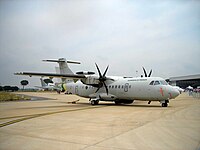 |
4 | ||
| P-72B | 2 | 2 to deliver in 2022 | ||
| Piaggio P.166DP1 | 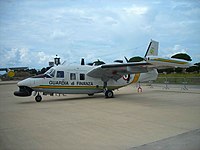 |
8 | ||
| Piaggio P.180 Avanti II |  |
2 |
Helicopters
| Type | Origin | Picture | In service | Note |
|---|---|---|---|---|
| AgustaWestland AW169M |  |
22 on order | Deliveries due between 2019 and 2024(Started November 2019)[19][20] | |
| AgustaWestland AW139 | 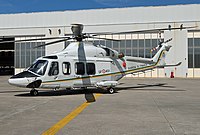 |
6 | Eight more on order[20] | |
| Agusta-Bell AB 412 | 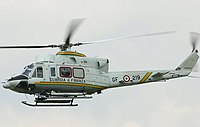 |
22 | ||
| Agusta A109AII / A109C / AW109N | 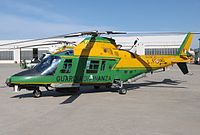 |
33 | ||
| Nardi Hughes NH-500MC / NH-500MD | 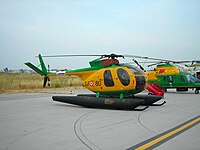 |
28 |



































